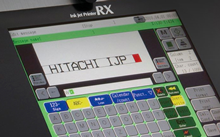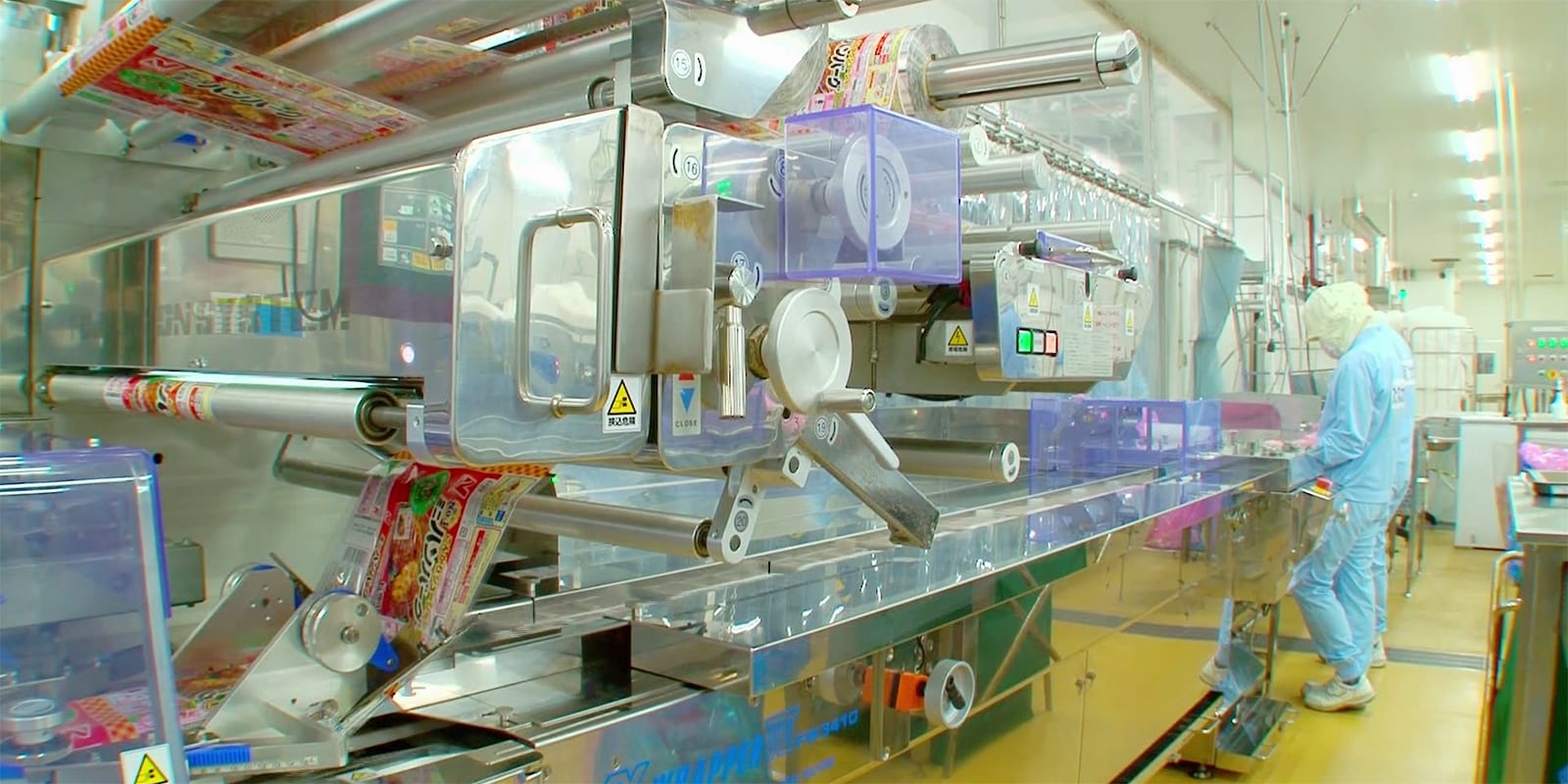
In recent years, the decreasing and aging population has caused serious labor shortages – especially in skilled workers – which have become a major societal issue in Japan. Meanwhile, there has been a dramatic rise in the growth of ready-made meals that can be easily cooked at home, due to the diversification of lifestyles such as increasing number of two-income households. The market for frozen foods is drastically expanding, and now covers the dining tables of many working households that do not have enough time prepare a fully-cooked meal.
Demand for frozen foods is expected to keep rising in the future. To deal with the diversification of customer needs and offering a lifestyles filled with smiles, Nichirei Foods, a pioneer in the industry, and Hitachi have engaged in a collaborative creation. The output of this project combined expert skills and digital technology to produce frozen foods that are easy to cook, safe and delicious.
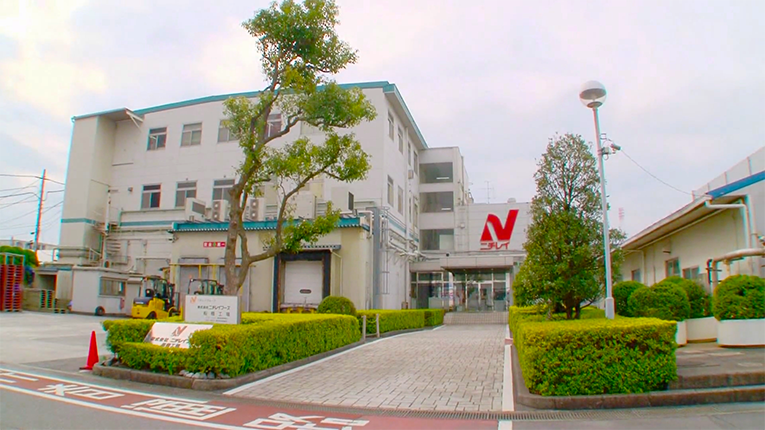
Nichirei Food’s Funabashi Plant in Chiba Prefecture
Nichirei Foods started producing prepared frozen foods in 1952 and has committed to enhancing people’s quality of life (QoL) by satisfying various food-related needs. To this end, the company has been responsible in delivering a multitude of product lineups depending on seasonal events and other various consumer needs. However, with the rising objections against food loss, production must also avoid waste as much as possible. To achieve this, a production system that is capable in supporting high-mix low-volume production was needed.
According to Tsuyoshi Murakami of the Nichirei Foods' Technology Management Department, "In addition to its ease of preparation, manufacturers’ efforts have also resulted in big improvements in taste. This has led to many inquiries from the food service industry in the recent years."
"In particular, the reason why frozen foods are attracting attention is the recent rise in foreign visitors to Japan. These visitors have brought with them a variety of eating practices, such as vegetarianism and halal, spurring a growth in demand for foods that meet these needs. So, for example, if a hotel restaurant is suddenly called upon to provide halal-compliant meals, then having a selection of frozen foods on hand enables the hotel to easily accommodate with such request."
Ahead of the entire industry, Nichirei Foods began to introduce IT to strengthen its production system in 2004. By incorporating voices from user departments, an original, easy-to-use production system was developed in-house, enabling production plants to tracks work instruction records and individual outcomes.
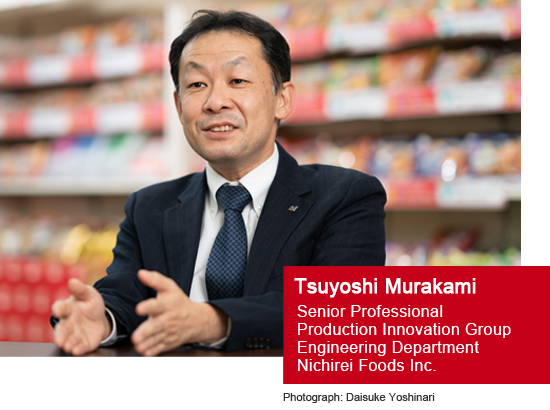
However, even with its longtime efforts, Nichirei Foods still faced a difficulty in streamlining the planning of production and staff schedule plans, as these two essential tasks relied much on human expertise. With the massive number of constraints and demands changing at a very high pace, expert workers’ know-how was crucial in making complex decisions. "Although we have to make rules in order to achieve efficiency and systemization, when it comes to developing plans, human work played such a big role that systemizing this was a big challenge," says Mr. Murakami.
Regardless of this situation, Nichirei still sought to somehow raise efficiency through systemization and the use of technology, and began to search outside the industry to collect information on various manufacturing industries. That was when Nichirei came across cases in which other companies improved their production planning through collaborative creation with Hitachi. "The fact that these companies used a system to reproduce the empirically based intuition of expert workers struck our heart."
At the core of any production plant sits the production planning and staff schedule planning. All plant instructions, including who makes what and when, are determined by these two tasks. Additionally, purchase orders for materials used on the line are also determined based on production plans. If there is a problem in these plans, it might not just degrade production efficiency, but also force a shutdown of the production line.
These important aspects must be settled on based on considering many different factors. A production plan reliably tracks each product through all processes up to completion and assigns products to be produced in each process. However, these are not just simple assignments. For example, there may be special conditions for a facility that only allows certain product to be produced at large amount at once. At other times there may also be a time-consuming cleaning process after a certain product is produced. In addition, production schedule may also be affected by trial productions of new products or urgent maintenance work.

Frozen doria (a rice-based casserole) on a production line at Shiroishi Plant
On the other hand, a staff schedule plan allocates workers to each process to ensure proper execution of the production plan. However, it is not enough to simply allocate necessary workers. Skills and experience vary by each person, with some workers being able to take charge of some processes but not others. In addition, the workload must be adjusted so that it is distributed equally among all. If, for instance, a biased plan is created that assigns a certain person with relatively easy tasks, it may cause dissatisfaction among others.
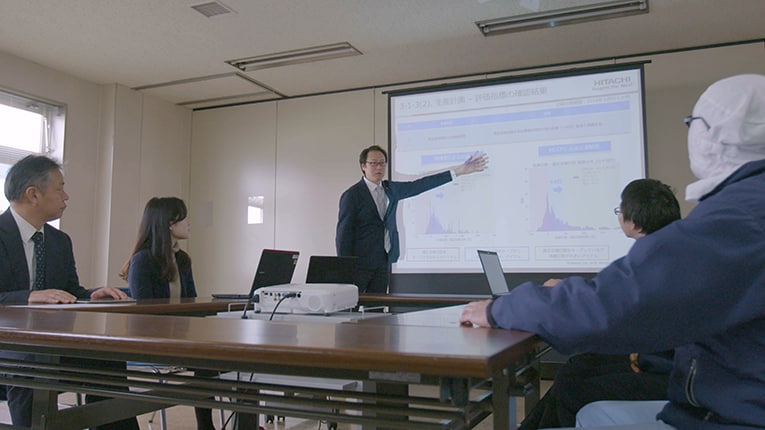
Employing "Ex Approach," project members of Nichirei Foods and Hitachi held numerous meetings
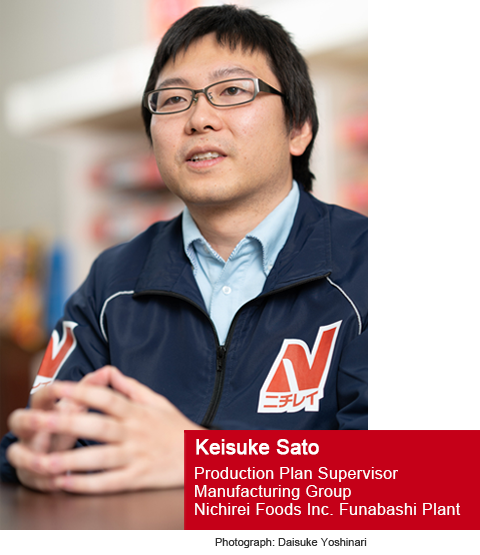
Expert workers create these complex plans by analyzing a large number of constraints and conditions using his or her own empirically earned knowledge and intuition. To provide systemized support for these crucial tasks, the minds of these workers must first be visualized. Nichirei Foods and Hitachi engaged in using Ex Approach, a collaborative creation method that helps stakeholders create "experienced value." Based on the idea of design thinking, Ex Approach allows Hitachi and its partners to become one unified team in detecting core issues, coming up with possible solutions, and verifying the value of each solution through prototyping.
Hitachi then pursued extensive discussions with employees at Nichirei’s production facilities, and took a detailed inventory of the work done by expert workers. Hitachi also set about to understand the unique in-house technical terms in use at Nichirei’s workplaces, enabling the two companies to engage in discussions through a deep mutual understanding.
An analysis of historical data was also conducted. Working together with expert workers, knowledge revealed during the analysis was verified one by one. As this went on, these workers noted success in visualizing information that they themselves were not conscious of. Keisuke Sato, an expert workers in charge of production planning at the Manufacturing Group, stated his impression that, with Hitachi having dove deeply into the Nichirei Foods’ workplace, "the process of withdrawing information from inside my head went quite smoothly."
Although Ex Approach and the understanding of operational data were factors in making it possible to stipulate many constraints, this was still not enough to improve the efficiency of plan development. While expert workers usually adhere to restraint conditions in order to develop plans, they also frequently relax and tighten these conditions by their own decision. For example, in the case of products for which it is undesirable to hold a large inventory, only a small quantity is set for production at one time. However, an empirical rule exists stating that this product sells well on cold days. Then, the expert worker will formulate a production plan that specifies greater production in winter only.
Hitachi’s Hitachi AI Technology/Plan Optimization Service has enabled the extraction of expert intuition and experience from historical plan patterns along with the application of such to plan development. The AI inputs plans previously developed by expert workers. It then extracts characteristic plan patterns that it detects as “expert know-how”.
Another technology that was introduced is Hitachi AI Technology/MLCP, a proprietary AI technology that combines Mathematical Optimization Technology, a technology cultivated by Hitachi over many years in the field of operations management (such as railway scheduling), with the big data analysis technology known as "machine learning." This has drastically accelerated pattern extraction and efficient plan development. The more extensive the historical data, the greater the accuracy of expert plan pattern extracted by AI. In this project, the key to success was the five-year historical data that has been accumulated by Nichirei Foods.
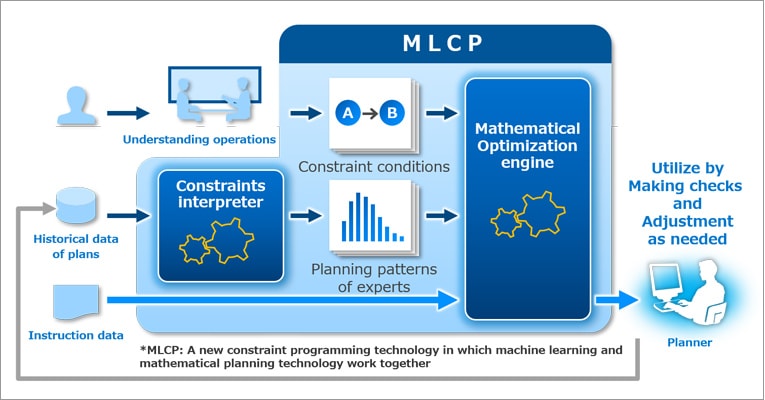
The sophisticated combination of Hitachi's mathematical optimization technology, AI machine learning, and Nichirei Foods' expert worker know-how contributes to more efficient and more flexible production and staff schedule planning.
After the basics of the system were completed, Nichirei Foods and Hitachi spent time on tuning the derived results. Through dedicated work, the new system reached the beginning of full-scale operation in January 2020— 2 years after the project was launched.
The collaborative creation between Nichirei Foods and Hitachi had several aims. Although the full effects of the system will manifest over time, Nichirei Foods has already begun to get a sense of what the system can help the company achieve. They are seeing it will contribute to work-style reform by reducing work hours and encouraging workers to take leaves. As Mr. Sato states: "We expect that it will be possible to cut the time spent in developing staff schedule plans to less than or equal to 1/10 of the current time." And, according to Seiko Miyoshi, person in charge of staff scheduling planning at the Manufacturing Group of the Nichirei Foods’ Mori Plant: "I'm expecting a huge decrease in time spent on staff schedule plan development. I'll be able to use the saved time to take charge of other tasks."
Mr. Sato goes on to say that: "As we have applied intuition that is based on experts’ empirical experience to the system, it is now possible for us to leave the planning tasks to others. It's grateful to have a sense of ease in asking a colleague to take over your place in case you have to take a day or two off." He also says that previously it has taken a year or more to train someone to take over an expert's work, but this period should decrease dramatically.
The system holds the potential to help relieve labor shortages in the future. Due to the fact that it complicates staff schedule planning, Nichirei Foods has avoided recruiting people seeking jobs with short hours. However, with the new system, it will allow various work styles for the workers, enabling the company to welcome such job seekers.
The implementation of the system has only just begun. As AI is put into operation and as its learning progresses, accuracy is expected to steadily increase. At present, Nichirei Foods has launched operation at 4 facilities that were selected as model plants. Plans are in place to gradually deploy and expand the system to 11 domestic plants and to plants located overseas.

The objective of Hitachi's and Nichirei Foods' partnership was to enhance the QoL of everyday people by supporting a stable supply of frozen foods that support the Japanese diet. As this project leads further to improvements in Nichirei Foods’ work environment, it is also its employees who will also benefit from a rise in QoL. In order to go on offering customers a lifestyles filled with smiles, Nichirei Foods will focus on people's daily lives, and through food, it will continue to contribute to creating a healthy and fulfilling society.
Meanwhile, Hitachi will continue to apply collaborative creation to supporting the Nichirei Foods initiative while globally deploying solutions that combine even more various knowledge and know-how with digital technology, working all along to find solutions to a broad range of industrial and societal issues.
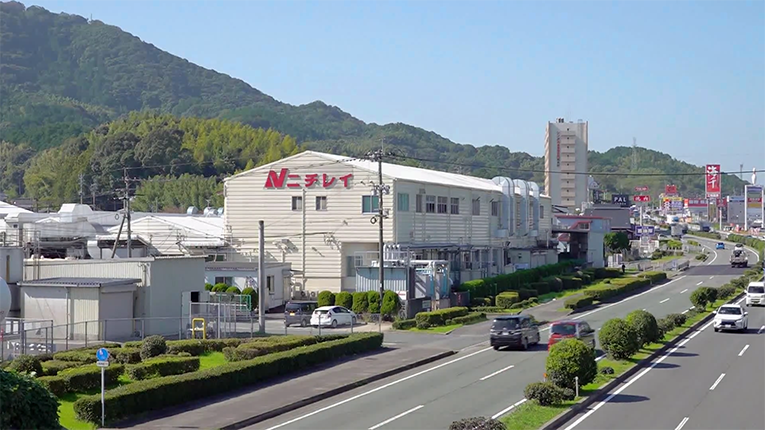
Nichirei Foods Group Kyurei
Release Date: March 2020
Solutions By: Industry & Distribution BU, Hitachi, Ltd.
